UAV / Drone (Aerospace) Cable Assembly Considerations
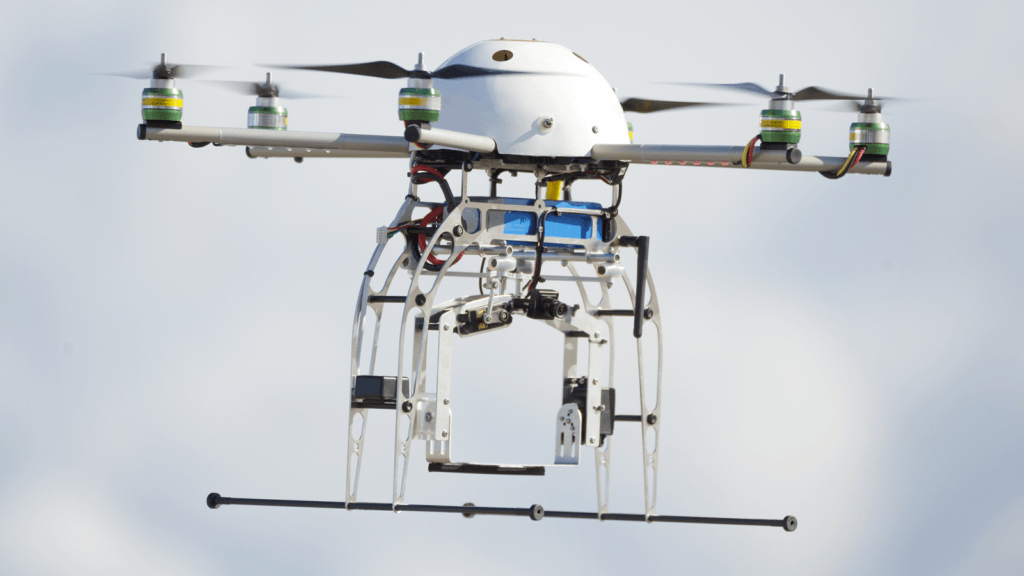
UAV, RPV & Drone (Aerospace) Cables
Aerospace cables are used in a variety of applications including data, fiber, Ethernet, power, video and more. Cables for aerospace applications must be prepared in a unique manner in order to comply with environmental, weight, aging, and safety requirements. Weight is of particular importance since large aircraft can require over 100 miles of wire weighing more than 3000 pounds. The lower the cable weight, the more economical the aircraft fuel consumption is, along with greater speed potential.
Aerospace Cable Considerations
- Weight: The weight of an aircraft cable can be reduced by utilizing wires with a higher temperature rating. These wires require less copper and hence weigh less. Another method of minimizing weight is to incorporate improved insulation.
- Environment: There are a variety of environmental considerations to account for including temperature, exposure to fluids, moisture, vibration, and pressure.
- Flammability: It is important that aircraft cables emit minimal smoke and dangerous gases if they are exposed to fire.
- Ease of installation: Aerospace cables must be easy to cut, strip, mark and terminate. They must also be flexible to allow for conduit routing.
- Overload conditions: The cables must be able to maintain circuit integrity in case of a current overload situation.
- Wireframe abrasion: Aerospace cables must be resistant to abrasion from surrounding conduits. Abrasion can be magnified with aircraft vibration.
- Surface properties: Cables must be able to be clearly marked, must be smooth, and receptive to label adhesion.
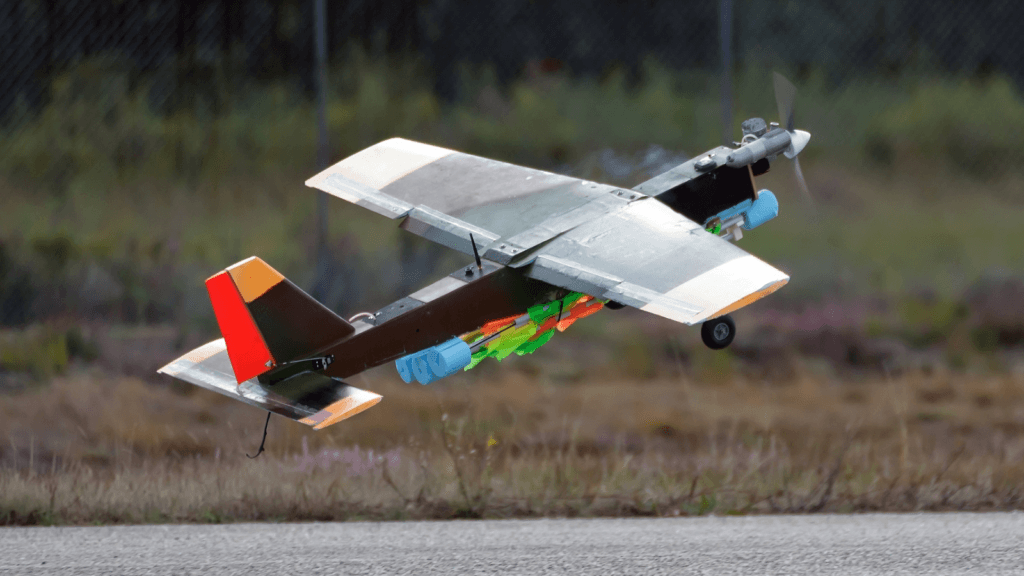
Aerospace Cables and EMI
Aerospace cables must adhere to specific Electro Magnetic Interference (EMI) requirements. Aerospace cables should follow these guidelines:
- Provide sufficient grounding at both ends of the cable to chassis ground.
- Shield the cable signals and minimize the transfer impedance (The voltage that develops on the other side of the cable surface due to the cable signal current).
- Minimize the use of braided shielding and instead use foil.
- Twist data signal wires which will help to cancel out emission fields.
- Use filtered connectors
Aerospace Cable Failure Modes
Care should be taken in the cable design to avoid failure modes which include the following:
- Aging: The wiring insulation can degrade with time. This happens when the electrical insulation dries out and becomes brittle. The insulation can then crack with aircraft vibration.
- Arc tracking: Arc tracking occurs when there is an electrical current along the insulation coating instead of just the wire conductor. Heat generated by the current flow causes a breakdown of the insulation material.
- Flash over: Once initiated, arc tracking can grow with time resulting in an arc across adjacent wires and the insulation material starts to burn. This occurs especially with Kapton wire which is now not permitted in aircraft wiring.
- Chafing: Chafing occurs as wires vibrate and rub against each other or against the aircraft structure.
Aerospace Cable Specifications
There are a variety of specifications that can be imposed on the design of an aircraft cable. In some applications the cable manufacturer must subject sample cables to various stress tests in order to prove that the specifications can be met. Some of the specification standards for aerospace include:
- BMS: BMS stands for Boeing Material Specification. These cover a variety of cable types including data bus and fiber.
- M27500 and M22759: These are military grade specifications used for aerospace cables. Many more MIL spec variations can be required depending on the application.
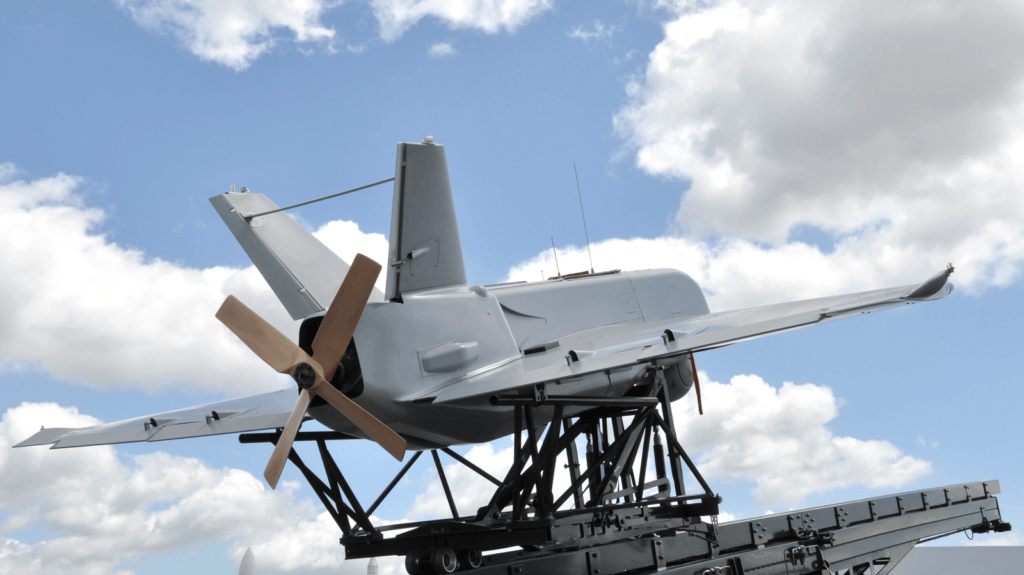
Loose Cable Responsible For Faster-than-Light Neutrino?
Recently, the case when scientists at CERN were left puzzled over neutrinos that appeared to travel faster than the speed of light. The findings were controversial because they conflicted directly with the theory of relativity, as well as virtually everything else we know about the way the universe functions. Ever since the results were released five months ago, scientists at both CERN and other institutions have worked to explain the results. It was believed that all potential errors had been eliminated. That is, until they checked their cables.
“Until They Checked Their Cables”
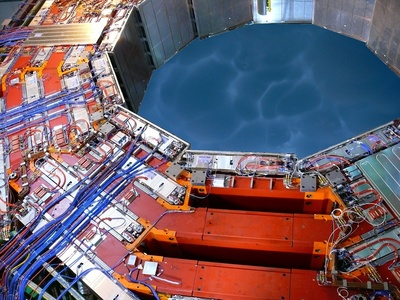
As it turns out, a fiber optic cable was distorting the results produced by one of the atomic clocks that was timing the neutrinos experiment. This loose cable caused the readings to appear slightly faster, making scientists read the neutrinos as being faster than the speed of light. Although only one source has reported this finding, it’s a sound explanation for a phenomena that was otherwise bordering on impossible to explain. This is an error that took almost half of a year for the world’s top scientists to find. The manpower, time and money that went into finding this error could certainly have been better invested in other areas. Instead, something as simple as a loose cable resulted in a black hole of productivity.
The issues seen in this experiment underscore that the cable & wiring details should never be overlooked whether its trying to figure out that plugging the RCA component cables in the wrong sequence threw out all the colors on your TV screen or when operating something of a large scale or of serious consequences. Suppose that the same thing happened not in a controlled experiment, but in an industry where the potential for danger is high. Cables with intermittent connection in high reliability industries can certainly be responsible for a host of interesting consequences. In a commercial or industrial facility, intermittent connections could lead to inaccurate temperature and facility readings.
Beyond these sorts of catastrophic failures in scenarios where a finished product is being used, loose or improperly installed cables can also make the results distorted in research environments. In industries, where new equipment and technologies are being tested, engineers and technicians rely on testing equipment to interpret readings. This is exactly what happened in the CERN experiment, but again, the results could be more devastating if the issue isn’t taking place in a controlled environment. Imagine the military commissioning a new jet that was designed based on faulty research due to loose aviation cables. The losses would amount to millions of dollars before anyone caught on to the flaw.
Situations like what happened at the CERN research facilities just prove that it’s never safe to overlook thorough inspection of even the most minor components. High-reliability industries just can’t afford the risk, especially if the system lacks redundancy. When constructing new equipment, the use of quality custom cables that are tailored to meet specifications is crucial. Properly manufactured cable assemblies customer specified and customized specifications means that the results being reviewed by engineers will be accurate every time. On the other hand, poorly built cable assemblies result in lost time, lost money and potential weeks of frustration.
Further Reading: Ars Technica
Flexible vs. Semi Rigid vs. Rigid RF (Coax) Cable Assemblies
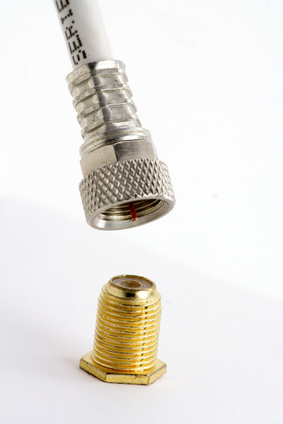
RF cable assemblies are made up of coaxial cable with appropriate connectors attached to the cable ends for interconnecting what are usually defined as signal sources and receivers. The Coaxial cables used are usually defined as flexible, the most common, semi-rigid and rigid with some hybrid cables such as “formable” cables that lie somewhere between flexible and semi-rigid and are usually applied to semi-rigid cable applications.
By definition a coaxial cable consists of an inner signal conductor that is surrounded by a tubular insulating layer (dielectric). A tubular conducting shield then surrounds these components. In this design the inner conductor follows the same geometric axis as the outer shield, or the inner and outer conductors are in a coaxial arrangement. Depending on the application a protective, non-conducting sheath is placed around the outer conductor.
Most commonly RF coaxial cables are used to form computer network (Internet and Ethernet) connections, distributing cable television signals or to connect RF transmitters and RF receivers with their antennas. When a voltage (signal) is applied to the center conductor and the shield is kept at ground (zero) potential, the design of the coaxial cable provides a transmission line where the electromagnetic field carrying the signal is limited to the insulated space (dielectric) between the inner conductor and the outer conductor or shield.
One simple advantage to this isolation is the allowance of installation of a coaxial line next to metal objects without power drainage. Additionally, the coaxial design provides protection of the RF signal from external RFI (radio frequency interference) or other EMI (electromagnetic interference). Consequently, coaxial cables are a good choice for weak signals that cannot tolerate interference and, conversely, for higher power transmissions that can cause interference to adjacent instrumentation.
Flexible Coaxial Cable
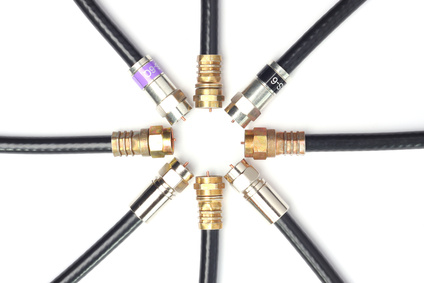
Probably the most common coaxial cable is the simple flexible coaxial cable commonly used by the layman to connect video equipment. This cable consists of a metal inner conductor, a flexible plastic polymer dielectric tube surrounding it, a braided/woven conducting metal shield around the dielectric and finally a jacket to protect the interior from environmental damage such as moisture, puncture and abrasion or breakage of the shield.
For extreme flexibility, a stranded copper central conductor is used with a surrounding dielectric tubing of PE (polyethylene) foam that is then surround by an Al tape outer conductor combined with a tinned copper braided shield.
When less flexibility is needed, somewhat higher performance characteristics are obtained when solid wire (bare copper, bare copper clad aluminum) or even copper tubing is used as the inner conductor. For higher frequency performance, the inner conductor may be silver-plated such as SPCW (silver plated copper wire) or silver plated copper clad steel. Braids and foils may also be silver-plated.
As an alternative to PE foam, more water resistant but less flexible solid polymer dialectrics such as LD PTFE (low density polytetraflouroethylene) are used. Cables can be jacketed with smoke retardent PE polymer coatings. The highest fire resistant rating is given to cable jacketed with FR PVC combined with PTFE dielectrics.
One of the disadvantages of highly fexible coaxial cable is the use of a braided shield that is not a smooth surface and bending causes variations in the actual electrical characteristics of the cable. Very sharp bends or even kinking of the shield can seriously affect transmission power and integrity. Similar results occur from bending of the stranded inner conductors. A solid conductor with a coating to smooth the surface and the use of a film shield within the braided shield are improvements but not ideal.
Semi-Rigid Coaxial Cable
To obtain better overall performance characteristics and dependability and maintain the concept of a coaxial cable designers have had to sacrifice flexibility. Semi-rigid designs provide better dielectric properties and shielding quality. Probably the most important difference between flexible and semi-rigid coaxial cable is that the braided outer or film shield is replaced with a solid metal outer sheath which has is bendable but flexible. Once formed (bent) the cable’s configuration is fixed.
Compared with a braided outer conductor, the solid shield provides superior performance especially at higher frequencies. In fact, the outer conductor can provide 100% RF shielding and allows precise spacing of the solid center conductor and surrounding dielectric. Outer sheaths can be solid bare copper, tin-plated copper or lighter (30%) tin-plated aluminum. Center conductors are commonly silver covered copper clad steel or SPCW. PTFE or LD PTFE tape is a common dielectric.
The semi rigid coaxial cable design providing the best electrical performance consists of a central conductor supported by a solid PTFE dielectric spline placed longitudinally inside a solid metal tube. These “Spline Cables” are fully vent-able and when mated to vented connectors they can be filled with air, other gases or operate in a vacuum as in spacecraft. They are expensive and require special care to bend and install. A copper tubular sheath lined with the dielectric PTFE/Air spline supporting a SPC tube center conductor is a common form.
Conformable or Hand-formable cables could be termed semi-flexible rigid-like cables and provide a choice when formation of the cable must be done at the point of installation. They can be cut, stripped and formed by hand. However, they are not intended for repeated bending. A solid tin plated aluminum shield, LD PTFE tape dielectric and a SPCW center conductor comprise a typical structure.
Rigid Coaxial Cable
Rigid coaxial cable is formed by two copper tubes supported at cable ends and at meter intervals with PTFE-supports and cannot be bent and require specially constructed elbows (45° and 90°) for turns/angles. Interconnections must be achieved with an inner bullet/inner support and a flange.
Rigid line coaxial cable is mainly used indoors for high power connections between RF-components in TV and FM broadcasting systems although the rigid line cables are used outdoors in antenna masts. Inner conductors are copper while outer conductors are either copper or aluminum for cost and weight savings.
Rigid vs. Semi Rigid vs. Flexible Coax (RF) Cable Assemblies
When outlining the benefits of rigid cable in comparison with semi-rigid or flexible coaxial cable it is in most ways a comparison between apples and oranges. Semi-rigid cables simply cannot come in the sizes necessary for high power applications involving TV, FM and many microwave frequency wireless transmission over significant distances. Semi-rigid cable sizes are limited for most applications to a 1/2” air filled spline semi-rigid cable with copper tube inner and outer conductors – a mini rigid cable – that is extremely difficult to bend are limited to GHz frequencies. Additionally, power-handling capabilities are measured at a few hundred watts.
Rigid cable comes in sizes ranging from 7/8” to 8 3/16”diameters, operate at TV and FM frequencies ranging from 800-60 MHz and have power capacities measured in 100s of KWs up to a megawatts and above. Sizes of 6 1/8” and above allow for multi-channel DTV/analog transmission. Elbows solve the problem of flexibility, and systems may be filled with dry air or inert atmospheres under positive pressure for outdoor use. Additionally, the newest designs do not require periodic maintenance and lifetimes are measured in decades.
When outlining the benefits of rigid cable in comparison with semi-rigid or flexible coaxial cable it is in most ways a comparison between apples and oranges. Semi-rigid cables simply cannot come in the sizes necessary for high power applications involving TV, FM and many microwave frequency wireless transmission over significant distances. Semi-rigid cable sizes are limited for most applications to a 1/2” air filled spline semi-rigid cable with copper tube inner and outer conductors – a mini rigid cable – that is extremely difficult to bend are limited to GHz frequencies. Additionally, power-handling capabilities are measured at a few hundred watts.
Rigid cable comes in sizes ranging from 7/8” to 8 3/16”diameters, operate at TV and FM frequencies ranging from 800-60 MHz and have power capacities measured in 100s of KWs up to a megawatts and above. Sizes of 6 1/8” and above allow for multi-channel DTV/analog transmission. Elbows solve the problem of flexibility, and systems may be filled with dry air or inert atmospheres under positive pressure for outdoor use. Additionally, the newest designs do not require periodic maintenance and lifetimes are measured in decades.
Crimping Vs. Soldering For Cable Assemblies
Cable assemblies can be produced either with the aid of crimped connections or soldered connections. The type of desired connection type is merely a matter of choice. In general, the trade off is between speed and reliability. It is possible to achieve reliable connections in the least possible amount of time through soldering, yet it’s also possible to obtain connections that may be slightly more solid via soldering. Both mass production and custom production have preferred methods, and both of these connection styles have their strong points and their weaknesses.
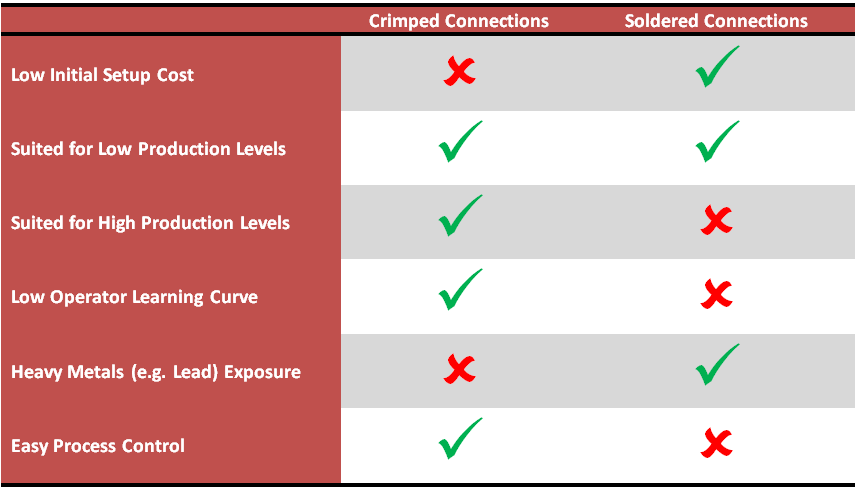 Crimping vs Soldering For Cable Assembly
Crimping vs Soldering For Cable Assembly
From a manufacturing perspective, the goal is throughput while maintaining quality. That almost definitely means that factory-made cable assemblies are produced with crimped connections. Making these connections is a simple as fitting the connector pins over the wires and using a reliably determined amount of force every time so that all pin connections are solid. The typical user will find that these crimped connections are secure enough for typical purposes. Cables for electronics purposes should never be placed under high tension or any other type of stress or strain. This might cause connections to come loose or wire insulation jackets to crack.
For those who need custom cables instead of the stock cable assemblies, whether to use crimped or soldered connections is simply a matter of choice. The reason soldered connections typically are not used in production environments is because of the time it takes to make each connection. Soldering requires heating the two metal surfaces to be mated so that the solder melts. This process requires special attention to detail. During the soldering process the wire insulation jacket should not become so hot that some of it melts and becomes trapped between the individual strands of wire. Also, concluding the soldering process, the solder flux has to be cooked out of the connection to ensure a reliable connection. For those who are proficient in their soldering skills, reliable connections can be achieved that are just as good as or even better than the crimped connections.
Soldering may also be an attractive option for those who only wish to produce a small quantity custom cables. Depending upon the type of connection, some of these crimping tools can cost nearly as much as the cable if not more. A soldering iron can be used for numerous projects, which brings down the cost of this job and many others, depending upon the life of the iron and the number of tasks. The decision whether to use crimped connections or soldered connections does not make a significant difference with regard to the useful life of the cable.
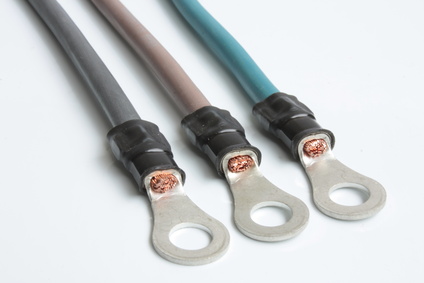
From the standpoint of longevity, either type of connection should last for the life of the user. However, given that most wires are made from copper, the soldered connection might provide slightly better protection against the corrosion that occurs just from normal open air exposure. Realistically, any resulting corrosion is slight, usually amounting no more to a native layer of oxidation. From a process perspective, crimping will always be preferred as the number of controllable variables are significantly less than soldering.
The terminals are standardized and will accept either type of connection. Whether these are custom cables or standard factory made cables, they should connect the same. From the standpoint of making connections to the terminals there is no significant difference. Using one type of connection over the other is merely a choice to be made at the discretion of the user. Crimped connections can be faster to produce, though soldered connections may provide a slightly more solid connection. Since both are equally capable of performing the same function, the real concern should be for the individual cable wires. These wires should be protected against stresses and strains that may cause the insulation jacket to weaken and even break.
PVC vs Polytetrafluoroethylene (PTFE) Wire Jackets
Based on the application, it may be difficult to pick the most suitable wire jacket. Often the choice boils to between Polytetrafluoroethylene jackets and PVC jackets. However, when the two types of jackets are compared, one will find that they are really quite different. One of the key differences between the two jackets is their price points.
When comparing the prices, it is easy to notice that Polytetrafluoroethylene wire is significantly more expensive than PVC wire. However, that is driven by the fact that there are many differences between PVC and Polytetrafluoroethylene wire. Each has its own unique properties, and can be used in different applications and project requirements.
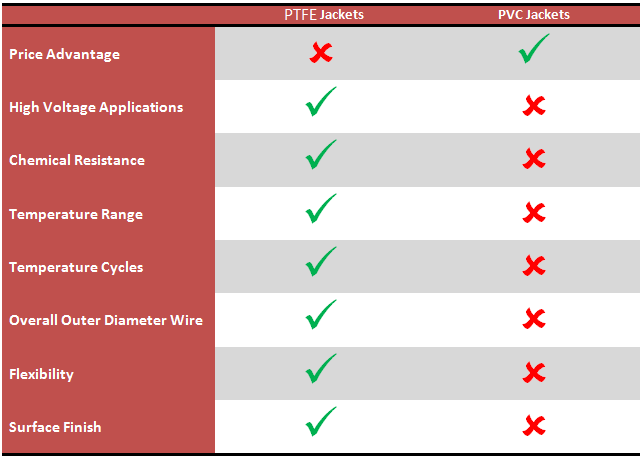
PVC, or polyvinyl chloride, is also known as vinyl. It is arguably the most dominant type of wire jacket available on the market. However, it is not designed for high-voltage applications. It is more suitable for low-voltage applications, and Polytetrafluoroethylene is usually better suited for higher voltage applications. PVC jackets are available in may different flavours for various applications. Additionally, PVC can differ as far as pliability and electrical properties go. Because of this, the prices off different PVC jackets can vary siginificantly. There are three different commonly known types of PVC. They include:
- Standard PVC, usually used for commercial and industrial applications. It is also used in computer and control wires applications.
- Semi Rigid PVC, tougher than the common PVC wire as well as the fact that its electrical properties are more stable, which means that it offers better protection then the first type.
- Indicated PVC, possesses unusually high resistance to abrasion. It should also be noted that it is also not thermoplastic.
PVC cables have good electrical properties that vary over a wide temperature range. Considering how durable and long lasting they are, for most applications they are fairly suitable. However, PVC wires do have some undesirable properties; for example, PVC wires should not be used in temperatures, which are above seventy degrees Celsius. Their thermal rating is limited. Also, it should be noted that the thermal decomposition of PVC has Hydrochloric Acid (HCI) as a bi-product.
Polytetrafluoroethylene has better electrical properties than PVC. It also has a higher temperature range and chemical resistance. Consequently, it is often refered to as high temperature wire. Unlike PVC wire jackets, which cannot be subjected to ultra-violet light for an extended amount of time, Polytetrafluoroethylene can. However, like PVC, Polytetrafluoroethylene should not be used in high-voltage applications. There are two types of Polytetrafluoroethylene wire:
- TFE wire jackets can be manufactured in long lengths because of the material from which it is made.
- FEP wire jackets can be manufactured in long lengths that are continuous. Additionally, they can be color coded for control applications.
Polytetrafluoroethylene offers significant number of advantages in most applications; often the biggest drawback of using Polytetrafluoroethylene jackets is the cost. Polytetrafluoroethylene is impervious to many different chemicals, including acid, hydrocarbons and other solvents. It is easy to sterilize. It also has a low volumetric expansion characteristic. It can also withstand extreme hot and cold temperatures cycles better then PVC jackets. However, some soldering processes can reach the temperature limit of Polytetrafluoroethylene, which in-turn carries its own set of health hazards.
Oxygen Free Copper and its Applications
Oxygen free copper is a type of copper that has been refined in an electrically charged solution of copper sulfate and sulfuric acid. This process, called electrolytic refining, causes the copper to have an exceptionally low level of oxygen, often less than one hundredth of a percent.
Commonly used in consumer electronics, oxygen free copper is most frequently found in high end audio-visual systems, though individual oxygen free copper wiring custom cable assemblies are also on the market for the pickiest of music connoisseurs. Oxygen free copper is used for speaker wires, audio/video connector cable assemblies, and amplifier wires because of its purported higher conductivity, and supposedly better ability to transfer low-frequency sounds. Some manufacturers also state that oxygen free copper wiring provides better clarity of sound, and lasts longer than other, less pure, copper wires.
While all of the claims about the good things about oxygen free copper wiring have a degree of truth in them, for most consumers, oxygen free copper wiring is not going to be noticeably different than any other type of copper wiring. The increase in conductivity is minimal, and is not due to the de-oxygenation of the wire. Rather, the process of electrolytic refining also removes other impurities, notably, iron, that can cause resistance. However, even so, the increase in conductivity would not be noticeable unless the wire was extended to a great length, say, over 50 feet. Since no consumer product uses wiring of anything near that length, the increased conductivity is delectably useful at best. In fact, there is no substantial difference between the performance of oxygen free copper and other types of copper in virtually all kinds of consumer products.
Despite its undeservedly high position in the consumer goods market, oxygen free copper does have some applications in very high-tech science equipment, notably, in the construction of magnetometers, electromagnets, and other superconductors. Additionally, oxygen free copper is sometimes used in the manufacture of semiconductors and other high end scientific equipment, such as particle accelerators. In these cases, oxygen free copper is often necessary, as the other components used to manufacture such equipment could have undesired chemical reactions with oxygen.
However, outside of the realm of cutting edge scientific equipment, and extremely advanced copper cable assemblies, oxygen free copper has little practical use, particularly in the consumer world. Though a strong advertising phrase today, it is unlikely to stick around for longer than a few marketing campaigns.
Lean vs Mass Manufacturing: A Very Brief Overview
 “Lean manufacturing” is a favorite buzzword of business conferences lately, and it’s easy for the uninitiated to be unclear on the difference between lean and mass manufacturing. In fact, they differ in many ways, from philosophy and business strategy to production models and company culture.
“Lean manufacturing” is a favorite buzzword of business conferences lately, and it’s easy for the uninitiated to be unclear on the difference between lean and mass manufacturing. In fact, they differ in many ways, from philosophy and business strategy to production models and company culture.
Lean manufacturing works on the principle of “work smarter, not harder,” and works to eliminate production waste; waste being anything that does not add any value to the final product. Common wastes include waiting time, processing, inventory, and leftovers. By eliminating waste, lean manufacturers are usually able to produce higher quality products in a shorter time.
Whereas mass manufacturing is based off of forecasts and sales, lean manufacturing works off of customer orders. This eliminates the need for warehouses, because little excess product is produced. This also keeps the company from having to sell products at a loss when they become obsolete. The most efficient lean manufacturers report more than twenty inventory turnarounds per year; most mass manufacturers report less than ten.
The culture of the two types of companies differs as well. The hierarchy of mass manufacturing companies is inflexible, and usually produces alienation between employees and managers. A lean manufacturing company has a flatter structure, and encourages broad employee participation, which creates a culture of mutual responsibility and open communication. Additionally, in mass manufacturing companies each employee tends to specialize in one area only, and only works on that particular machine or production area, while those in lean companies are widely cross-trained.
Industries that particularly benefit from lean manufacturing are usually those that exist in rapidly evolving markets or those that require a lot of know-how to produce a quality product. Technological manufacturers are one of those most fond of lean manufacturing, as a large inventory of product can quickly turn into a pile of obsolete junk as the industry changes. For example, a custom cable manufacturer could be left with reels of useless wire, or warehouses of out-of-date custom cable assemblies, which would have to be liquidated at a loss. Also, technological industries like cable assembly companies require a high level of skill from their employees to produce quality products, which can become extremely expensive under the specialist system in mass manufacturing.
Though both types of manufacturing produce results, lean manufacturing is considered more forward-thinking, and is becoming increasingly popular, particularly, as stated, in the technology industry. Although more and more companies are converting to lean manufacturing, large companies will continue to rely on mass manufacturing when quality is not a top priority and they can afford a small seasonal loss.
What to Know Before Buying Insulated Wire
From the most basic cable assemblies to intricate custom cable assemblies, insulated wire is found in some form. It’s wide range of uses makes it popular for many kinds of projects, but before you get started, it’s important to do some homework on the wire you plan to buy.
How will it hold up under pressure?
This can encompass a range of issues, but when choosing wiring for a cable assembly, you need to consider what that assembly will go through, and look into the specs of your wiring before you buy. Specific things you should look for include the cable’s optimum temperature range for operation, it’s resistance to water and humidity if it will be in a damp place, and whether it has the flexibility to fit into the type of space you’re working with.
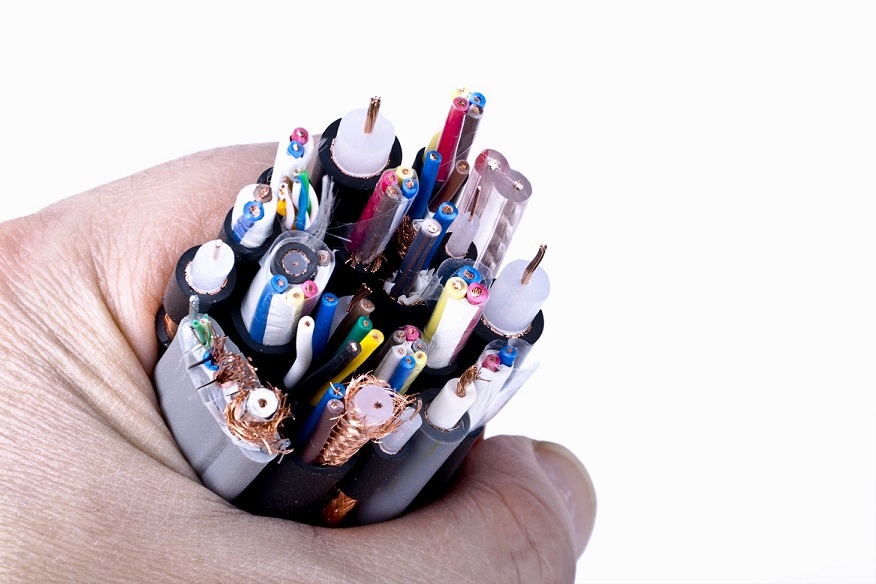
What is its usage rating?
Along with checking how the insulated wire and cable will work in less than ideal conditions, be sure to check how those conditions will affect its usage rating. Every cable is assigned a rating which states the maximum current that can be passed through that wire, along with a maximum temperature for the surface of the conductor. Wires that are commonly used in cable assemblies installed in extreme places, have several ratings, one for its use under ideal circumstances, and one for use in wet places, or places with extreme temperatures. By checking this beforehand you can avoid having to do costly repairs or a full replacement down the road.
What method was used for marking the cable?
This may not seem very important, but the way the cable was marked can make a big difference in its quality. Cables marked by hot stamping are more likely to have damaged insulation or exposed wired due to the pressure on the insulation during the marking. Problems caused by poorly done cable marking are particularly important to look out for when doing large scale cable assembly, when one bad wire can undo a whole lot of work.
Knowing the capacity of your wire before you install it, choosing the right kind of wire for the job, and being able to avoid damage-prone wires makes a huge difference in both basic and custom cable assemblies. If you are unsure of what kind of insulated wire to buy, be sure to consult a professional to avoid expensive repairs or worse, replacements.
*Remember each situation is unique and this is generic information, always consult a professional before making any decision.
STP vs UTP Cables: Application Comparison

Differentiated physically by little more than a conducting shield, shielded twisted pair cables and unshielded twisted pair cables nonetheless have different advantages, disadvantages, and best applications.
Both shielded twisted pair (STP) and unshielded twisted pair (UTP) have interference canceling capacities, however the way that each one is designed to cancel the interference is different. Interference caused by power lines, radar systems or other high power electromagnetic signals, called noise, can cause an imbalance in the current flowing through the shield or conductors of the cables which interferes with the signal. STP cables have a conducting shield made of metallic foil encasing the twisted wire pairs, which blocks out electromagnetic interference, allowing it to carry data at a faster rate of speed.

However, they have several disadvantages. STP cables work by attracting interference to the shield, then running it off into a grounded cable. If the cable is improperly grounded, then its noise-canceling capabilities are severely compromised. Additionally, STP cables are bigger than UTP cables, and are more expensive. Finally, they are more fragile than UTP cables, as the shield must be kept intact in order for them to work properly. The best use for STP cables are in industrial settings with high amounts of electromagnetic interference, such as a factory with large electronic equipment, where they can be properly installed and maintained.
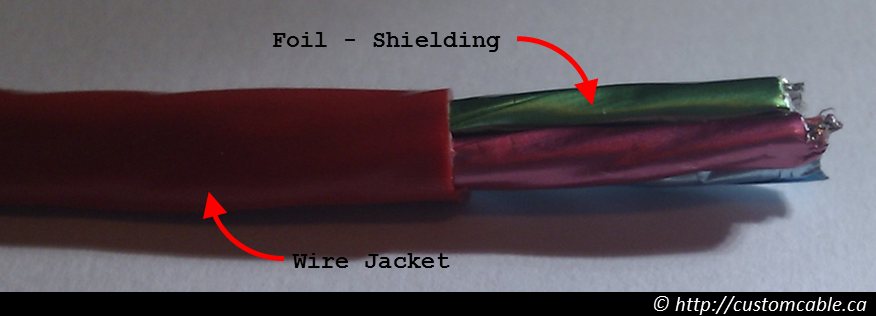
UTP cables are the most commonly used cables for ethernet connections, and have a number of advantages. They rely on the cancellation affect caused by the twisting of the wire pairs to handle noise, which is more than enough for most domestic uses. They are also smaller than STP cables, which makes them easier to install, particularly in bulk or in narrow spaces. They are easier to install than STPs, and do not require the presence of a grounding cable. UTP cables are also cheaper than STP cables, and do not require as much maintenance, since they do not rely on an outer shield, and can transmit data as fast as STP cables. However, they are more prone to noise than properly installed and maintained STP cables. They are best used for domestic and office ethernet connections, and in any area where there is not a high degree of electromagnetic interference.
While both STP and UTP cables have their pros and cons, when installed and maintained properly in a situation appropriate to their uses, both work perfectly fine.
Lean versus Agile Production
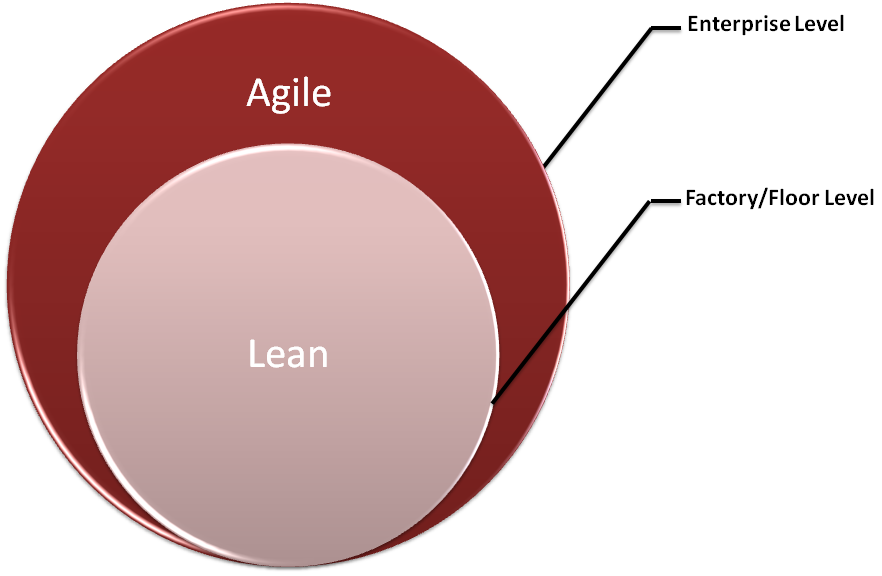
It was in 1989, that for the first time the world was introduced to the term ‘lean production’ as it was coined in by MIT. On the other hand, Agile Manufacturing can trace its origins in a research study by Lehigh University in the early 90s.
Before discussing lean and agile, it’s important to place lean manufacturing in context with the traditional mass production principles. Lean manufacturing does away with many of the manufacturing principles, and guidelines of mass production. A brief comparison is tabled below:
Mass production |
Lean Production |
| Inventory Buffers | Minimum Inventory |
| Just in Case deliveries | Just in time deliveries |
| Acceptable Quality Level | Perfect first time Quality |
| Taylorism | Worker Teams and Worker Involvement |
| Maximum efficiency | Flexible production systems |
| If ain’t broke, don’t fix it | Continuous improvement |
| Minimum waste |
Adapted from Mikell P. Groover’s Automation, Production Systems, and Computer Integrated Manufacturing, 2nd Edition
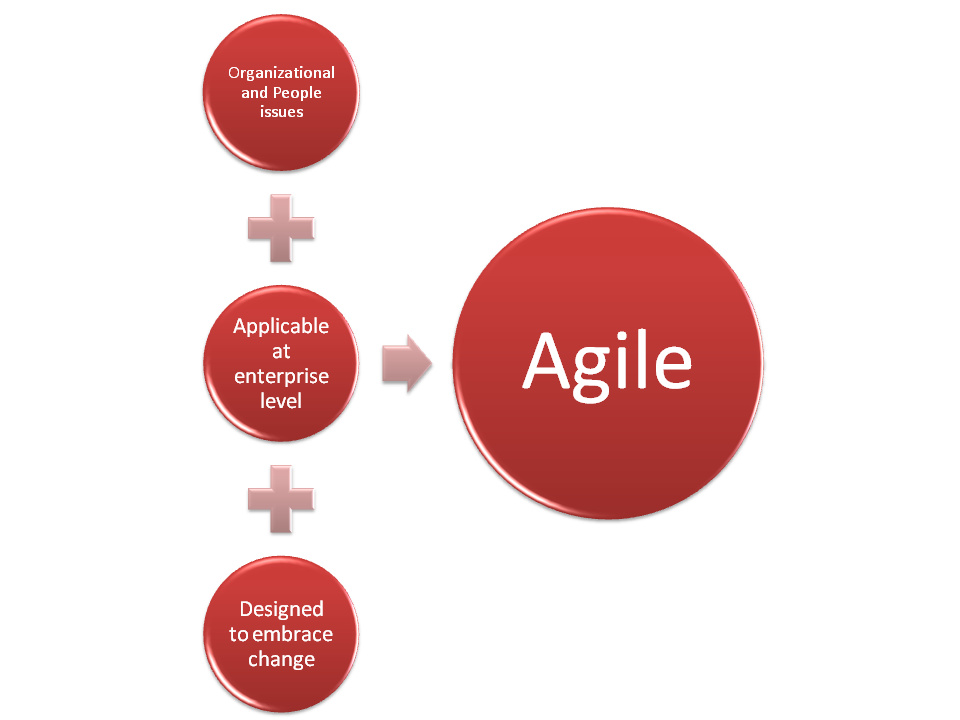
Although, tabled nearly at the same time as Lean Manufacturing, it is indeed Agile manufacturing which is far more relevant to the North American manufacturers at the enterprise level, than the former. Reason is simple enough; today many North American manufacturers are primarily focused on producing customized solutions as per client specs and in small to medium sized batches. Today quantities as little as 500 to 1000 pieces of practically any product can be outsourced to offshore vendors with considerable cost advantage.
It is important to remember that lean allows for waste free, efficient system that adds to the bottom line and in turn give competitive pricing advantage. However, most customers today come to local manufacturing facilities for their ability to quickly adapt to changes, better technical support, shorter time to market and most importantly, short production runs. Consequently, absolute focus on lean production may not be suitable for most local manufacturers and application of agile manufacturing principles on the enterprise level is important to maintain competitive against local and overseas competition.
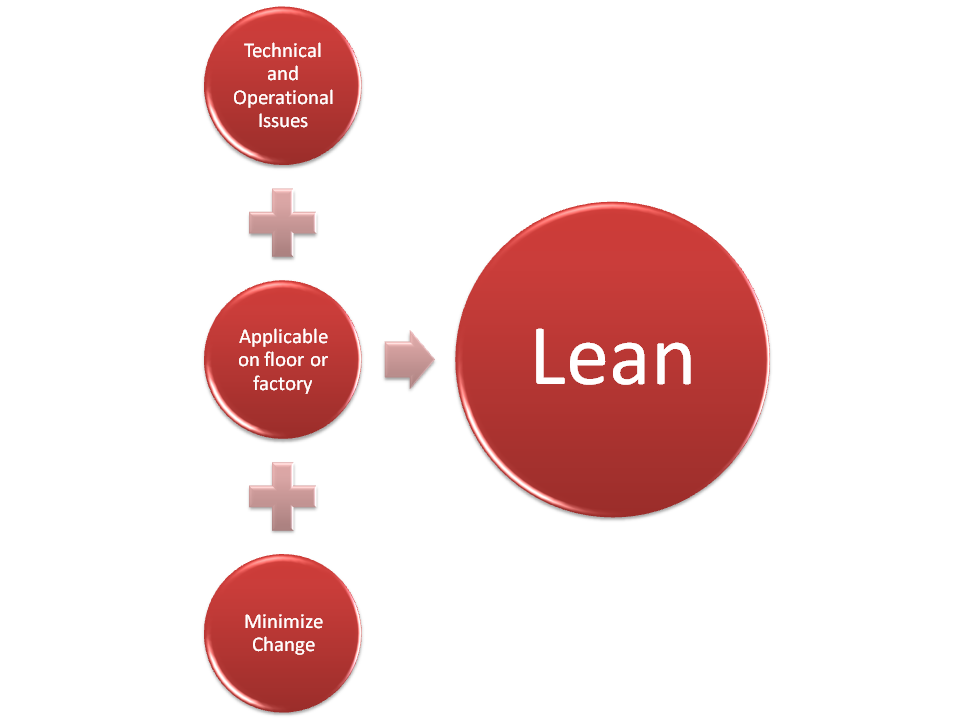
Lean and agile principles complement each other, however, the scale at which they are applied are different. Lean principles are best applied at the factory or floor level where efficiency takes precedence of all except safety. On the other hand, agile principles are most suitable at the enterprise level where ability to adjust to changing internal and external factors is off utmost importance. The emphasis in lean is more on the technical and operational issues, while agile addresses the people and organizational issues.
However, where there is a significant difference is how change management is performed under each system. Lean tries to minimize change, whether internal or external in order to minimize waste and increase efficiency. Whereas, agile embraces change. The idea is to thrive at the ever changing environment and business landscape.
In fact, agile manufacturing should be seen as the natural extension and evolution of the lean principles.
Four Principles of Lean Production and Agile Manufacturing
Lean Production |
Agile Production |
| Minimize Change | Enrich the Customer |
| Perfect first-time quality | Cooperate to enhance competitiveness |
| Flexible production lines | Organize to master change |
| Continuous improvement | Leverage the impact of people and information |
Adapted from Mikell P. Groover’s Automation, Production Systems, and Computer Integrated Manufacturing, 2nd Edition
Comparison of Lean Production and Agile Manufacturing Attributes
Lean Production |
Agile Production |
| Enhancement of Mass Production | Break with mass production; emphasis on mass customization. |
| Flexible production for product variety | Greater flexibility for customized products |
| Focus on factory operations | Scope is enterprise wide |
| Emphasis on supplier management | Formation Virtual enterprises |
| Emphasis on efficient use of resources | Emphasis on thriving in environment marked by continuous unpredictable change |
| Relies on smooth production schedule | Acknowledgement and attempts to be responsive to change. |
Adapted from Mikell P. Groover’s Automation, Production Systems, and Computer Integrated Manufacturing, 2nd Edition
